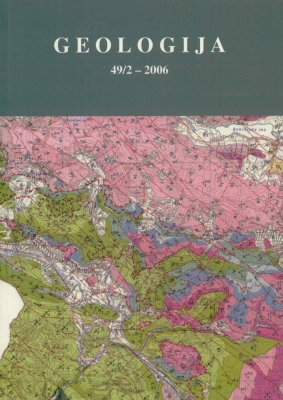The origin of volcanic rock fragments in Upper Pliocene Grad Member of the Mura Formation, North-Eastern Slovenia
DOI:
https://doi.org/10.5474/geologija.2006.018Abstract
Fresh-water, coarse-grained and detritus-dominated Mura Formation in North- Eastern Slovenia includes pyroclastic and volcaniclastic deposits originating from Upper Pliocene volcanic activity of basaltic geochemical character. Although localized in occurrence at the hamlet Grad, these pyroclastic and volcaniclastic sediments form a distinctive depositional unit, for which the term “Grad Member" is proposed and introduced in this paper. In the Grad area no lavas or cinder cones are preserved, and the origin of volcaniclastic fragments still uncertain. For this reason, Chemical composition of basaltic rock fragments from the Grad Member volcaniclastics has been studied and compared with basaltic rocks from the neighboring locations at Klöch, Kindsberg, Dölling and Neuhaus. The Grad Member pyroclastic and volcaniclastic deposits seem to be fed from the same source which is different from the occurrences in Austria. That supports the idea about the existence of a local volcanic centre in the present Grad area. The old volcanic edifices were possibly destroyed by the late-stage hydrovolcanic eruptions, and pyroclastic and volcaniclastic deposits subjected to constant reworking by fluvial currents in a dynamic sedimentary environment of alluvial fan and braided river systems.Downloads
How to Cite
Kralj, P. (2006). The origin of volcanic rock fragments in Upper Pliocene Grad Member of the Mura Formation, North-Eastern Slovenia . Geologija, 49(2), 243–251. https://doi.org/10.5474/geologija.2006.018
Issue
Section
Articles

